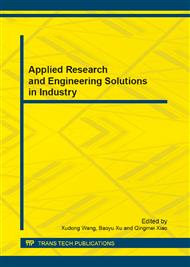p.603
p.607
p.611
p.615
p.620
p.625
p.631
p.635
p.639
Valve Leakage Simulation and Fault Diagnosis of Diesel Engine
Abstract:
To valve leakage in working process of diesel engine, the corresponding fault simulation is an important measure for finding a diagnostic method. By the Law of Conversation of Energy, Conversation of Mass and the Classical Equations, mathematical model of working cycle of diesel engine is reasonably built and calculated. Through analyzing valve leakage fault, the single Weber-function is used as a combustion model in fault simulation. Fault diagnosing of valve via the energy parameters of cylinder head vibration signal is proposed. The key to diagnose valve leakage closely lies in analyzing its high frequency components through selecting the cylinder head vibration signal close to the maximum burning and exploding pressure step and proposing spectrum analysis.
Info:
Periodical:
Pages:
620-624
Citation:
Online since:
February 2013
Authors:
Keywords:
Price:
Сopyright:
© 2013 Trans Tech Publications Ltd. All Rights Reserved
Share:
Citation:


